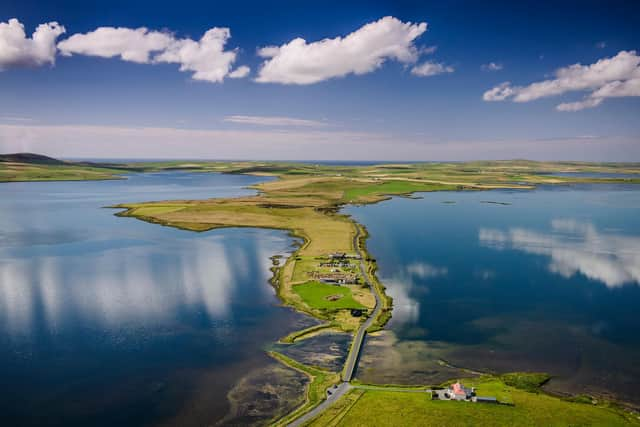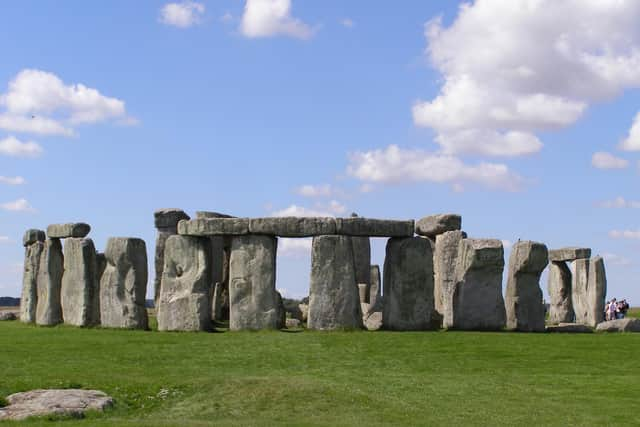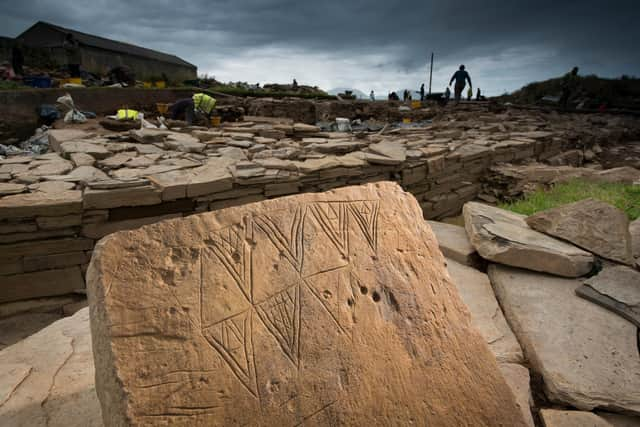Ancient Orkney artefacts show how "happening" islands influenced Stonehenge
More than 30 items will go on show at a new British Museum show, The World of Stonehenge, which will show how thinking around monuments, rituals, pottery, art and housing in Neolithic Orkney came to influence those connected to the monument on Salisbury Plain.
The objects, including decorated stones, mace heads and furniture, have been excavated at Ness of Brodgar, a vast ritual site and domestic settlement in the heart of Neolithic Orkney.
Advertisement
Hide AdAdvertisement
Hide AdDr Jennifer Wexler, curator of The World of Stonehenge, said Orkney was the most “happening place” at the time.


She said: “A lot of the ideas we’re looking at in the exhibition, such as monumental places for people to gather at key times of the year and the development of influential types of pottery or house structures, originated in Orkney over 5,000 years ago.
“These ideas seem to be coalescing in Orkney and they are key to the story of Stonehenge.
“We are using Stonehenge as a gateway to the wider world, but we want to show there was a level of sophistication and discussion between people that is very broad. It goes to Orkney, it goes to Europe.”
The earliest known structures at Ness of Brodgar were built around 5,500 years ago, with the main circle at Stonehenge built some 1,000 years later, although remnants of an earlier stone circle have been found nearby.


A key item sent from Orkney is the Brodgar Butterfly, a piece of highly decorated stone. Similar patterns have been found on a chalk drum in East Yorkshire, which was buried in a grave of three children, with the design emerging around the time Stonehenge was built.
Curators believe the drum connects communities in Orkney, Yorkshire, Stonehenge, Orkney and Ireland.
Dr Wexler said: “We are discovering is that this shared artistic language leaves Scotland and moves into England.


Advertisement
Hide AdAdvertisement
Hide Ad"Orkney seems to be this cultural hub which is taking ideas from other places and then massively developing them in a new way.”
A piece of stone dresser from a house at Ness of Brodgar will also feature.
Dr Wexler said: "The Orkney dressers are the finest versions you can get. They show an interesting way of working. These pieces are connected to other important ritual sites, such as Newgrange in Ireland and Stonehenge.
“We don’t know how many people are moving around, but there is certainly a dialogue going on. These ideas are filtering through and people are using them in a local way.”
The earliest date for Ness of Brodgar is around 3,500 BC, with the main building, The Temple, deliberately destroyed in a great show and accompanying feast around 2,350BC – around the time Stonehenge was built.
Nick Card, excavation director at Ness of Brodgar, said: “To actually have our material there being exhibited next to some of the most iconic artefacts from the Neolithic era, including the Nebra Sky Disc and the Seahenge monument, is a huge accolade for the Ness and the hard work that all of our team has put in."
A message from the Editor:Thank you for reading this article. We're more reliant on your support than ever as the shift in consumer habits brought about by Coronavirus impacts our advertisers.
If you haven't already, please consider supporting our trusted, fact-checked journalism by taking out a digital subscription.
Comments
Want to join the conversation? Please or to comment on this article.
